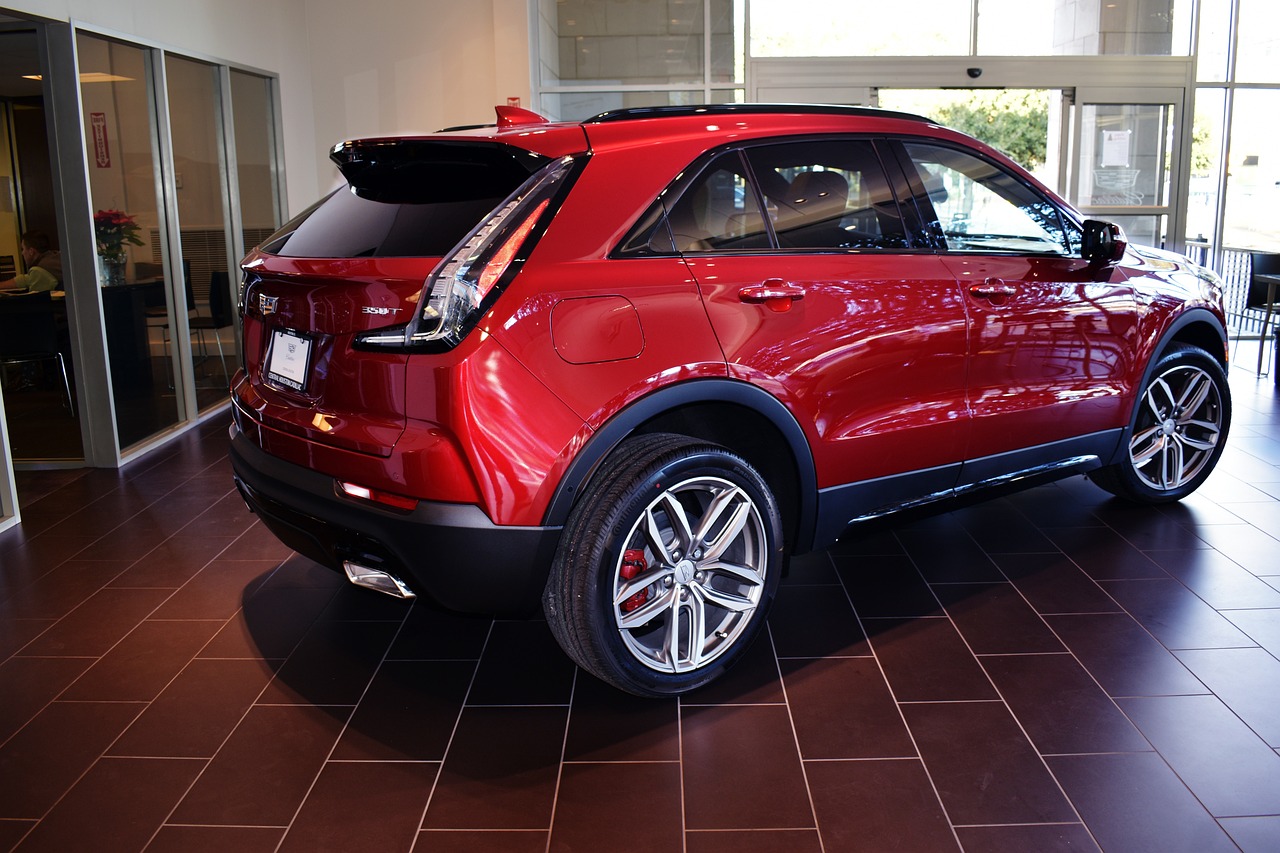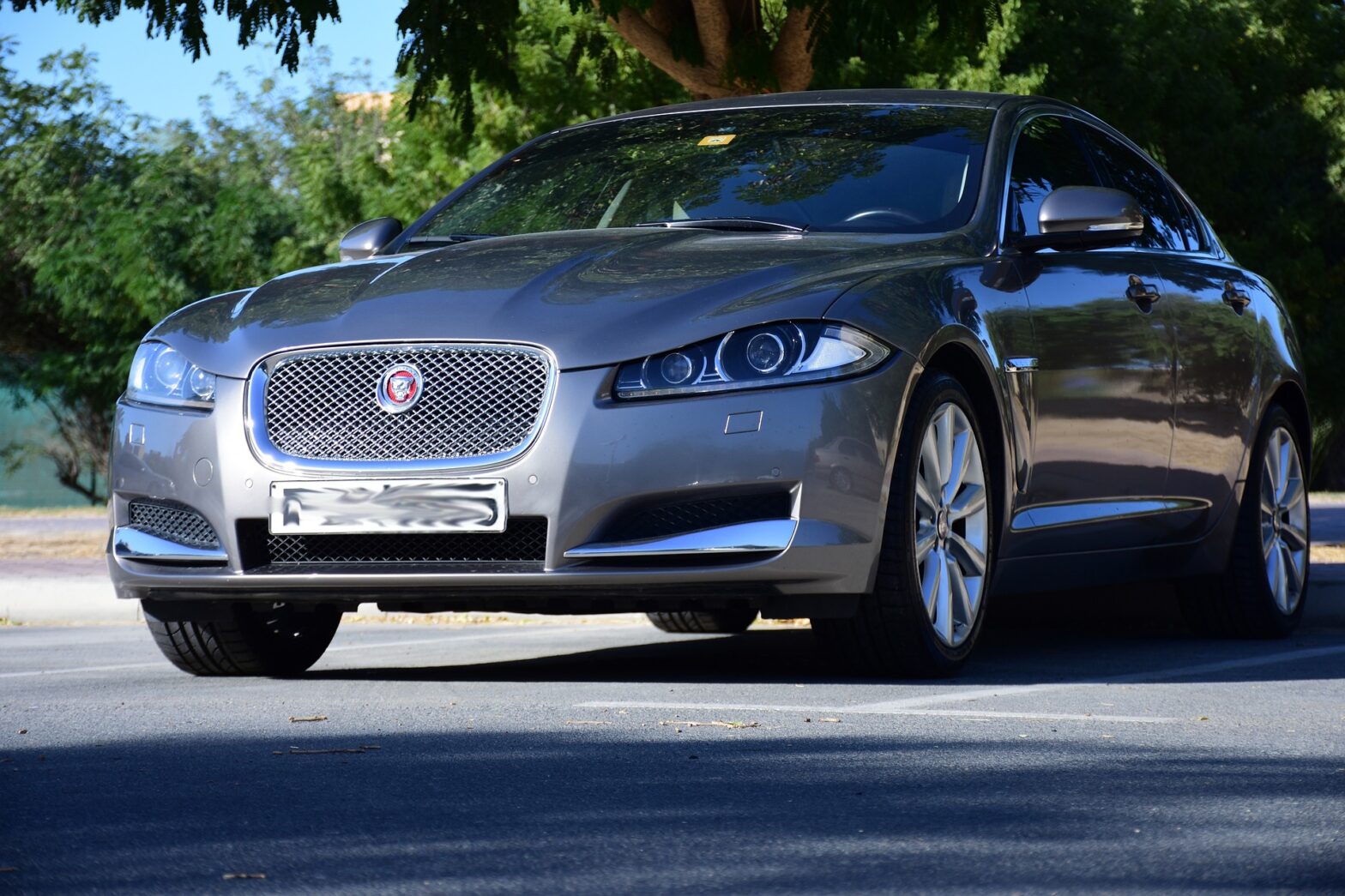When it comes to luxury car brands, BMW, Audi, and Mercedes-Benz are among the most popular and highly regarded choices. Each of these brands has a long and storied history, with legions of devoted fans and enthusiasts around the world. But how do these three brands compare to each other, and which one is the best choice for you? In this article, we’ll take a deep dive into the world of BMW, Audi, and Mercedes-Benz, and explore the similarities and differences between these three luxury car giants.
History and Legacy
All three of these German luxury car brands have a long and distinguished history. BMW, which stands for Bayerische Motoren Werke, was founded in 1916 in Munich, Germany. The company initially produced aircraft engines, but later shifted to motorcycles and automobiles. Today, BMW is known for its sporty and performance-oriented cars, with popular models including the 3 Series, 5 Series, and M series.
Audi, on the other hand, was founded in 1909 in Zwickau, Germany, and was acquired by the Volkswagen Group in 1964. Audi is known for its sleek and modern designs, as well as its advanced technology and cutting-edge engineering. Popular Audi models include the A3, A4, and A6, as well as the high-performance RS and R8 models.
Finally, Mercedes-Benz has perhaps the longest and most storied history of the three. The company was founded in 1926 in Stuttgart, Germany, and has been a pioneer in the luxury car industry ever since. Mercedes-Benz is known for its elegant and sophisticated designs, as well as its advanced safety features and luxurious interiors. Popular models include the C-Class, E-Class, and S-Class, as well as high-performance AMG models.
Design perspective
BMW is known for its sporty and aggressive designs, with sharp lines and a focus on performance. The iconic “kidney grille” is a hallmark of BMW design, and is instantly recognizable to enthusiasts around the world. BMW also offers a wide range of exterior and interior customization options, allowing buyers to personalize their cars to their own tastes. BMW’s design language is often described as “athletic” and “muscular,” with a focus on creating cars that are fun to drive and look good doing it.
Audi, on the other hand, is known for its sleek and modern designs, with a focus on simplicity and understated elegance. Audi’s signature “single-frame” grille is a distinctive feature of its design language, and the brand’s cars are known for their clean lines and minimalist styling. Inside, Audi cars are known for their advanced technology and luxurious materials, with a focus on creating a driver-centric experience. Audi’s design language is often described as “clean” and “minimalist,” with a focus on creating cars that are both beautiful and functional.
Mercedes-Benz, finally, is known for its elegant and sophisticated designs, with a focus on luxury and comfort. The iconic three-pointed star emblem is a symbol of Mercedes-Benz’s commitment to quality and innovation, and the brand’s cars are known for their refined and luxurious interiors. Outside, Mercedes-Benz cars are known for their distinctive lines and graceful curves, creating a sense of timeless elegance. Mercedes-Benz’s design language is often described as “elegant” and “sophisticated,” with a focus on creating cars that are both comfortable and beautiful.
Styling perspective
In terms of styling, BMW, Audi, and Mercedes-Benz all offer a wide range of options and customization features. Let’s take a closer look at how these three brands compare.
BMW is known for its sporty and dynamic styling, with a focus on creating cars that are fun to drive and look good doing it. The brand’s cars are often described as “muscular” and “athletic,” with a focus on creating a sense of power and performance. BMW offers a wide range of exterior and interior customization options, allowing buyers to personalize their cars to their own tastes.
Audi, on the other hand, is known for its clean and minimalist styling, with a focus on creating a sense of modernity and sophistication. The brand’s cars are often described as “streamlined” and “aerodynamic,” with a focus on creating a sense of efficiency and precision. Audi offers a wide range of exterior and interior customization options, allowing buyers to personalize their cars to their own tastes.
Mercedes-Benz, finally, is known for its elegant and refined styling, with a focus on creating a sense of luxury and comfort. The brand’s cars are often described as “sophisticated” and “timeless,” with a focus on creating a sense of class and elegance. Mercedes-Benz offers a wide range of exterior and interior customization options, allowing buyers to personalize their cars to their own tastes.
Design and styling conclusion
BMW, Audi, and Mercedes-Benz are all excellent choices for luxury car buyers, with a range of design and styling features that cater to a wide range of needs and preferences. BMW is known for its sporty and aggressive designs, with a focus on performance and customization. Audi is known for its sleek and modern designs, with a focus on simplicity and advanced technology. Mercedes-Benz is known for its
Performance perspective
When it comes to performance, BMW is perhaps the most performance-oriented of the three. The brand’s focus is on creating cars that are fun to drive and that offer plenty of power and speed. BMW is known for its high-revving, turbocharged engines that deliver excellent acceleration and handling. The company’s M series of high-performance cars are especially popular with enthusiasts, offering track-level performance and handling.
Audi, on the other hand, is known for its advanced engineering and cutting-edge technology. The brand’s Quattro all-wheel-drive system is legendary, providing excellent traction and handling in all types of weather and road conditions. Audi’s cars are also known for their advanced suspension systems, which provide excellent ride comfort and handling. Audi offers a wide range of engines, from efficient four-cylinder engines to high-performance V8 and V10 engines.
Mercedes-Benz, finally, is known for its elegant and sophisticated designs, with a focus on luxury and comfort. The brand’s cars are designed to provide a comfortable and smooth ride, while also offering plenty of power and performance. Mercedes-Benz offers a range of engines, from efficient four-cylinder engines to high-performance V8 and V12 engines. The brand’s AMG high-performance models are especially popular, offering track-level performance and handling.
Technology perspective
All three of these luxury car brands are known for their advanced technology features, with a focus on innovation and cutting-edge engineering. Let’s take a closer look at how BMW, Audi, and Mercedes-Benz compare in terms of their technology features.
BMW is known for its iDrive infotainment system, which provides an intuitive and user-friendly interface for controlling a wide range of features and functions. BMW’s iDrive system offers a wide range of features, including navigation, climate control, audio, and more. The brand also offers a range of advanced safety features, such as collision warning and lane departure warning.
Audi, on the other hand, is known for its Virtual Cockpit digital instrument cluster, which provides a customizable display of information and controls. The Virtual Cockpit system provides a wide range of features, including navigation, audio, and more. Audi also offers a range of advanced safety features, such as adaptive cruise control and automatic emergency braking.
Mercedes-Benz, finally, is known for its advanced safety features, with a focus on providing a safe and secure driving experience. The brand’s cars offer a range of advanced safety features, such as collision warning, lane departure warning, and automatic emergency braking. Mercedes-Benz also offers a range of advanced technology features, such as the COMAND infotainment system, which provides an intuitive and user-friendly interface for controlling a wide range of features and functions.
Performance and technology conclusion
BMW, Audi, and Mercedes-Benz are all excellent choices for luxury car buyers, with a range of performance and technology features that cater to a wide range of needs and preferences. BMW is perhaps the most performance-oriented of the three, with a focus on creating cars that are fun to drive and that offer plenty of power and speed. Audi is known for its advanced engineering and cutting-edge technology, with a focus on providing excellent traction and handling. Mercedes-Benz, finally, is known for its elegant and sophisticated designs, with a focus on luxury and comfort, and a range of advanced safety and technology features. Ultimately, the best choice for you will depend on your individual needs and preferences, so it’s important to do your research and test.
Reliability perspective
When it comes to reliability, BMW, Audi, and Mercedes-Benz all have their strengths and weaknesses. According to Consumer Reports, BMW ranks 7th in overall reliability, while Audi ranks 3rd, and Mercedes-Benz ranks 14th. However, it’s important to note that these rankings can vary depending on the specific model and year.
BMW is known for producing cars that offer a thrilling driving experience, but this can come at the expense of reliability. According to Consumer Reports, BMW has had issues with its electrical system, fuel system, and suspension, which can result in higher-than-average repair costs. However, BMW has also made improvements in recent years, with many of its newer models ranking highly for reliability.
Audi, on the other hand, is known for producing cars that are both stylish and reliable. According to Consumer Reports, Audi has fewer issues with its electrical system and suspension than BMW, which can result in lower repair costs. However, Audi has had issues with its engine cooling system, which can result in higher repair costs.
Mercedes-Benz is known for producing cars that are luxurious and comfortable, but this can come at the expense of reliability. According to Consumer Reports, Mercedes-Benz has had issues with its electrical system, engine cooling system, and transmission, which can result in higher-than-average repair costs. However, like BMW, Mercedes-Benz has made improvements in recent years, with many of its newer models ranking highly for reliability.
Warranty perspective
Another factor to consider when it comes to reliability is the warranty offered by each of these luxury car brands. BMW, Audi, and Mercedes-Benz all offer similar warranties, with a basic warranty that covers four years or 50,000 miles, and a powertrain warranty that covers four years or 50,000 miles. Additionally, all three brands offer roadside assistance and free scheduled maintenance for a limited time.
Reliability conclusion
In conclusion, when it comes to reliability, Audi is generally considered the most reliable of these three luxury car brands, while BMW and Mercedes-Benz have both had their fair share of issues in the past. However, it’s important to note that reliability can vary depending on the specific model and year, so it’s important to do your research and choose a car that has a good track record for reliability. Additionally, it’s important to consider the warranty offered by each of these brands, as this can help provide peace of mind and protection against unexpected repair costs. Ultimately, the best choice for you will depend on your individual needs and preferences, so it’s important to carefully consider all of your options before making a decision.
Fuel efficiency perspective
When it comes to fuel efficiency, BMW, Audi, and Mercedes-Benz all have their strengths and weaknesses. According to the US Department of Energy, BMW’s fleet-wide average fuel economy for the 2021 model year is 25.1 miles per gallon (mpg), while Audi’s fleet-wide average is 25.9 mpg, and Mercedes-Benz’s fleet-wide average is 25.4 mpg.
BMW is known for producing cars that offer a thrilling driving experience, but this can come at the expense of fuel efficiency. Many of BMW’s cars are designed to provide excellent performance and handling, which can result in lower fuel efficiency. However, BMW has also made improvements in recent years, with many of its newer models featuring more efficient engines and advanced hybrid and electric powertrains.
Audi, on the other hand, is known for producing cars that are both stylish and efficient. Many of Audi’s cars are designed to provide a balance between performance and fuel efficiency, with advanced engineering and aerodynamic designs that help to reduce fuel consumption. Additionally, Audi offers a range of hybrid and electric powertrains, including the e-tron electric SUV and the A8 plug-in hybrid.
Mercedes-Benz is known for producing cars that are luxurious and comfortable, but this can come at the expense of fuel efficiency. Many of Mercedes-Benz’s cars are designed to provide a smooth and comfortable ride, which can result in lower fuel efficiency. However, like BMW and Audi, Mercedes-Benz has made improvements in recent years, with many of its newer models featuring more efficient engines and advanced hybrid and electric powertrains.
Alternative Powertrains
One important trend in the automotive industry is the shift towards alternative powertrains, such as hybrid and electric vehicles. BMW, Audi, and Mercedes-Benz all offer a range of hybrid and electric powertrains, with varying degrees of efficiency.
BMW offers a range of hybrid and electric powertrains, including the BMW i3 electric car and the BMW i8 plug-in hybrid sports car. The i3 has a range of up to 153 miles on a single charge, while the i8 has a combined fuel economy of 76 mpg.
Audi offers a range of hybrid and electric powertrains, including the e-tron electric SUV and the A8 plug-in hybrid. The e-tron has a range of up to 222 miles on a single charge, while the A8 plug-in hybrid has a combined fuel economy of 54 mpg.
Mercedes-Benz offers a range of hybrid and electric powertrains, including the Mercedes-Benz EQC electric SUV and the S560e plug-in hybrid. The EQC has a range of up to 279 miles on a single charge, while the S560e has a combined fuel economy of 63 mpg.
Efficiency conclusion
When it comes to fuel efficiency, Audi is generally considered the most efficient of these three luxury car brands, while BMW and Mercedes-Benz have both had their fair share of lower fuel efficiency vehicles in the past. However, it’s important to note that fuel efficiency can vary depending on the specific model and powertrain, so it’s important to do your research and choose a car that has good fuel economy for your specific needs. Additionally, it’s important to consider the alternative powertrain options offered by each of these brands, as hybrid and electric vehicles can offer even greater fuel efficiency and environmental benefits. Ultimately, the best choice for you will depend on your individual needs.
Price perspective
When it comes to pricing, BMW, Audi, and Mercedes-Benz all have their strengths and weaknesses. According to Kelley Blue Book, the average price for a BMW in 2021 is $57,704, while the average price for an Audi is $56,213, and the average price for a Mercedes-Benz is $64,482.
BMW is known for producing cars that offer a thrilling driving experience, but this can come at a premium price. Many of BMW’s cars are designed to provide excellent performance and handling, which can result in higher prices. However, BMW offers a range of models at different price points, allowing buyers to choose a car that fits their budget.
Audi, on the other hand, is known for producing cars that are both stylish and affordable. Many of Audi’s cars are designed to provide a balance between performance and value, with advanced engineering and features that help to provide a competitive price. Additionally, Audi offers a range of models at different price points, allowing buyers to choose a car that fits their budget.
Mercedes-Benz is known for producing cars that are luxurious and elegant, but this can come at a premium price. Many of Mercedes-Benz’s cars are designed to provide a smooth and comfortable ride, with advanced features and technologies that help to provide a premium experience. Additionally, Mercedes-Benz offers a range of models at different price points, allowing buyers to choose a car that fits their budget.
Cost of Ownership
Another factor to consider when it comes to pricing is the cost of ownership. This includes factors such as fuel efficiency, maintenance costs, and repair costs. According to Kelley Blue Book, BMW, Audi, and Mercedes-Benz all have similar costs of ownership, with maintenance costs and repair costs being higher than average due to the luxury nature of these brands.
Price conclusion
In conclusion, BMW, Audi, and Mercedes-Benz are all excellent choices for luxury car buyers, with a range of pricing options that cater to a wide range of needs and budgets. BMW is known for producing cars that offer a thrilling driving experience, but this can come at a premium price. Audi is known for producing cars that are both stylish and affordable, with a range of models at different price points. Mercedes-Benz is known for producing cars that are luxurious and elegant, but this can come at a premium price. Ultimately, the best choice for you will depend on your individual needs and preferences, so it’s important to carefully consider all of your options before making a decision. Additionally, it’s important to consider the cost of ownership, including maintenance and repair costs, when choosing a luxury car brand.









